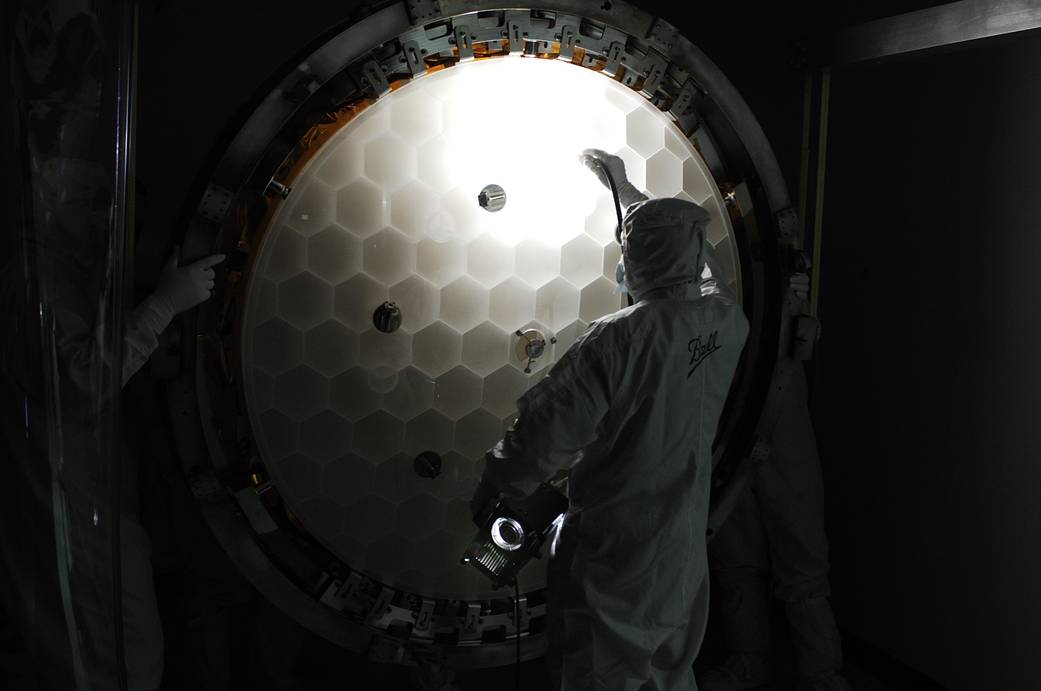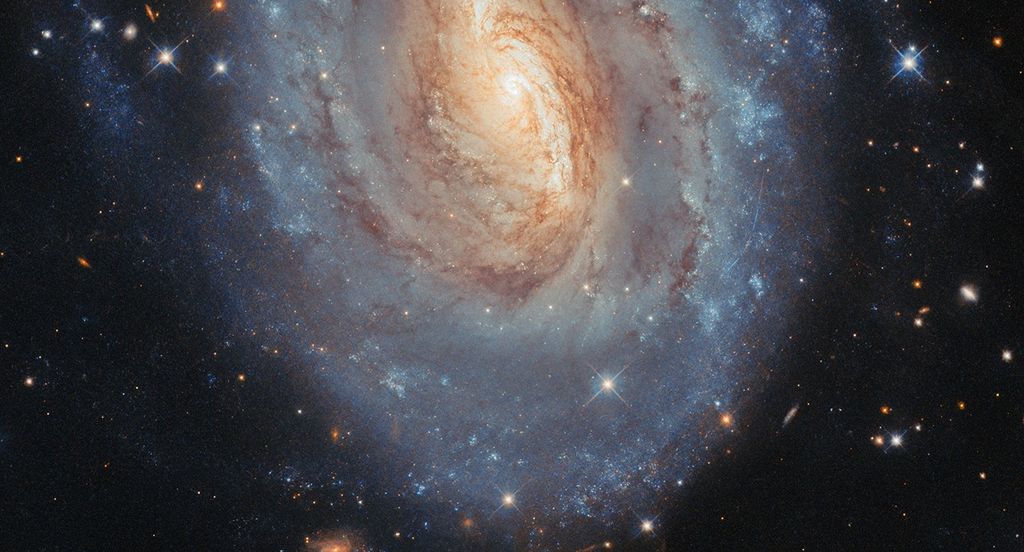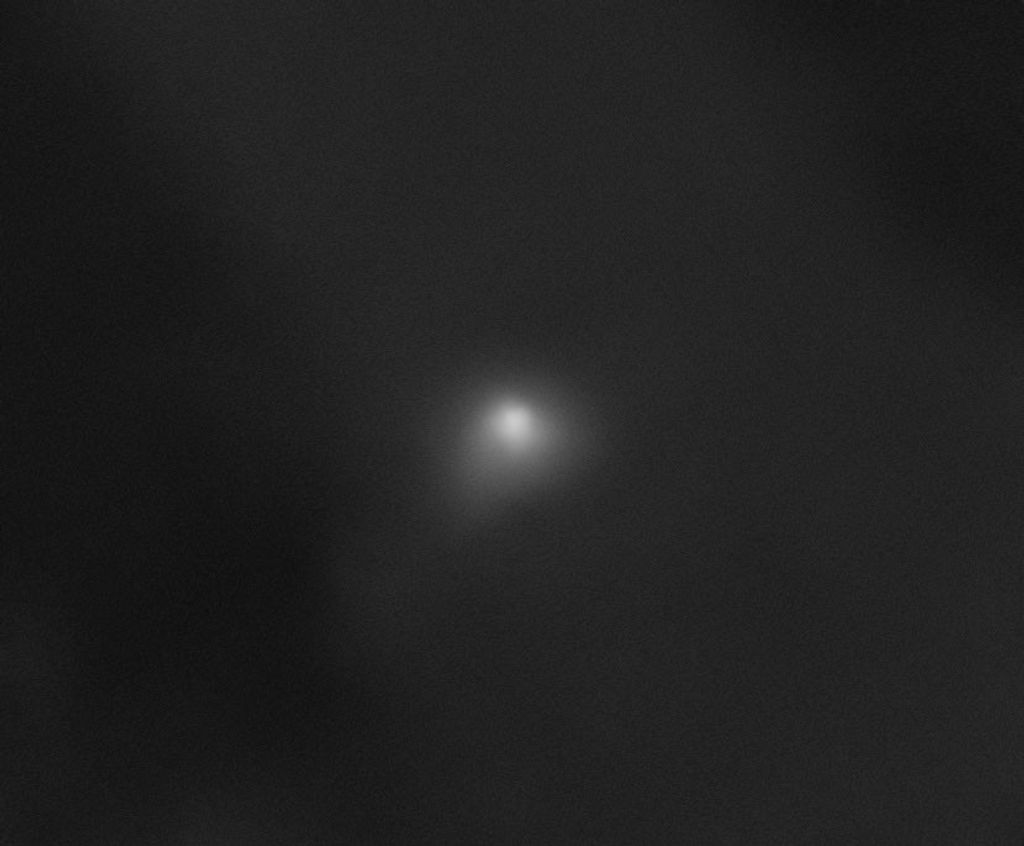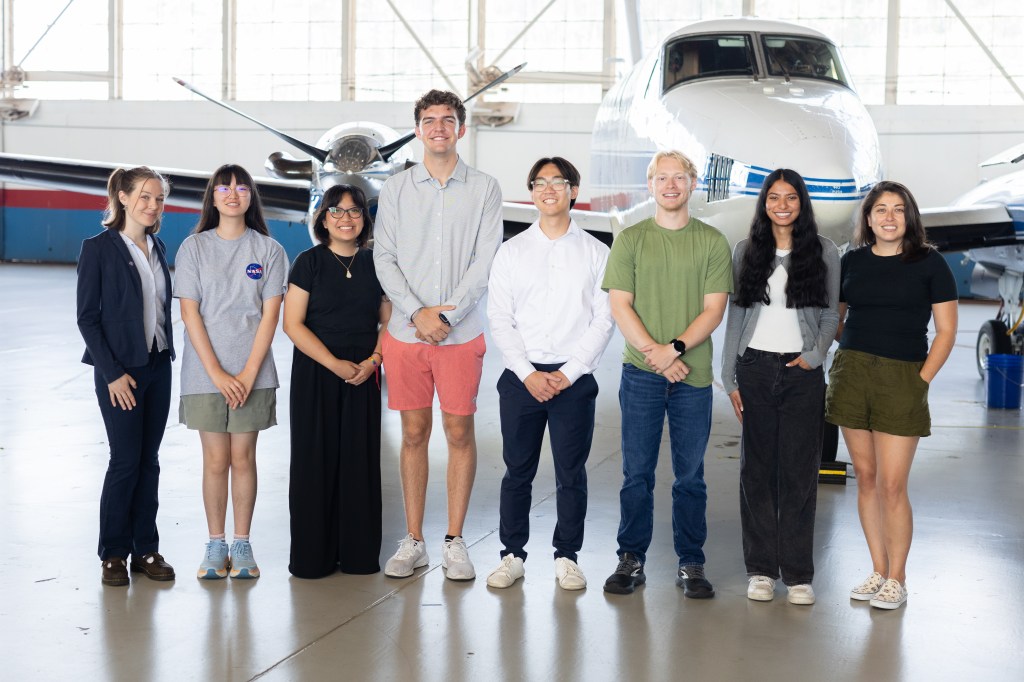
Technicians from Ball Aerospace inspected the honeycomb structure of the Kepler Space Telescope’s primary mirror. The mirror has been 86% light-weighted; that is, it only weighs 14% of amount that a solid mirror of the same dimensions would. The mirror blank was made by Corning Glass works out of ultra-low expansion glass, or ULE. The optical polishing of the mirror was performed by Brashear LP.
Kepler launched On March 7, 2009, on a 3 1/2 year mission to survey the more than 100,000 sun-like stars in the Cygnus-Lyra region of our Milky Way galaxy. It is expected to find hundreds of planets the size of Earth and larger at various distances from their stars.
There is now clear evidence for substantial numbers of three types of exoplanets; gas giants, hot-super-Earths in short period orbits, and ice giants. The challenge is to find terrestrial planets, especially those in the habitable zone of their stars where liquid water might exist on the surface of the planet.Image Credit: NASA/Ball Aerospace



























